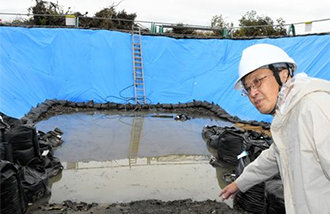Japanese Firms Faring Poorly in China
Japanese electronics companies that moved into China are not faring well.
Japanese companies lost credence last year when defects were found in their digital cameras and televisions. Their market share in the Chinese information technology products, such as notebook computers and mobile phones, also fell noticeably.
Toshiba and Mitsubishi, two Japanese companies that experienced big falls in market share, gave up their mobile phone businesses in China last year.
Experts have attributed the late China-fright phenomenon to the risks in the Chinese market. They say that the rising yuan and labor costs, along with other worsening business conditions, are forcing Japanese companies to turn to India and Vietnam.
There is also one very different diagnosis: Japanese companies have been forced to leave China because they paid too much attention to technology and not enough to localization. This may give Korean companies an important lesson.
Japanese companies in China struggling-
According to the Korea Trade-Investment Agency (KOTRA), the share of Japanese products in Chinese imports fell from 20.2 percent in 1998 to 14.6 percent as of the end of April (in aggregate). During the same period, the share of Korean products has risen from 10.7 percent to 11.5 percent.
Exports of electric and electronic products also took a very different path. Korean exports to China were only 30 percent of that of Japan, but this year there is hardly any difference with 98.6 percent.
The situation got worse for the Japanese companies as Chinese consumers ignored Japanese products.
Sony, one of the most famous Japanese home appliances company, failed to receive authorization from the Chinese government when defects were found in its digital cameras last November. Its televisions and camcorders turned up with defects as well.
Chinese consumers started turning a blind eye to Japanese companies when major home appliances companies including Matsushita were found profiting a hundred times more than other Chinese companies from its flat color television sets.
Learning from ones mistakes-
Many say that the Japanese companies arrogant marketing strategy cost them their downfall in China.
They say that Japan already had some success in targeting the Chinese market in the 80s, but its companies did not succeed in adapting to the Chinese market.
Miles Young, Chairman of Ogilvy and Mather Asia Pacific, says, that Japanese companies employed the same marketing strategy in China that was set by the headquarters for the Japanese market. He concludes that marketing strategy that is not fine-tuned for the Chinese market was bound to fail from beginning.
The Japanese companies technology-centered attitude also failed to move the Chinese.
When Japanese companies moved their production facilities to China to cut costs, they limited the number of years Japanese employees could be stationed abroad to prevent technology leakage.
Given the short amount of time, their employees focused more on near-sighted gains based on superior technology than on efforts to make a lasting relationship with Chinese consumers.
KOTRA Vice-Director of Shanghai Trade Center Park Han-jin says, The Japanese companies are blaming themselves for failing to localize in the Chinese market, and having concentrated only on technology. This is a very telling lesson for Korean companies.
Chief Researcher Koo Bon-kwan of Samsung Economic Research Institute advises, Korean companies maintain a better image than Japanese companies in China, but they have to give more decision-making power to their Chinese local corporations and continuously work on localization.
Chang-Won Kim Min-Young Kwak changkim@donga.com havefun@donga.com







